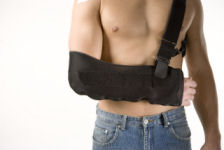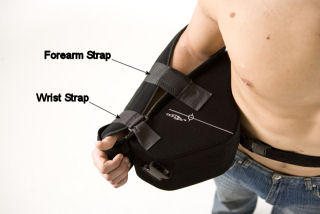ACJ Stabilisation
Lennard Funk, Updated Dec 2021
A complete AC joint dislocation that is still painful after about 3-6 months is usually an indication for offering stabilisation of the joint. However, some acute dislocations that are very displaced are stabilised soon after the injury.
There are many different procedures to reduce and stabilise the AC Joint. The procedure choice will depend on a number of factors, mainly based your surgeon's experience and training. Some of the procedures we have used are:
- Modified Weaver-Dunn procedure
- Arthroscopic procedure
- LARS Ligament procedure
- LockDown Procedure (prev. Surgilig)
Our current preference is for the LARS Ligament, which is extremely strong and provides an anatomical reconstruction, which allows an earlier mobilisation and return to work and sports than many of the other techniques. Click here for our presented results.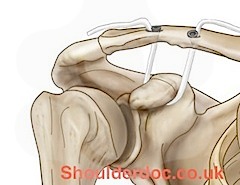
Your Operation
You must not eat or drink anything after midnight the day before your surgery. When you wake up following the procedure you will be wearing a sling. The sling should be worn at night and when out and about for 3-6 weeks (depending on your surgeon's protocol). You will then wean off the sling with the aid of your physiotherapist.
For more details on Living with a Shoulder Sling CLICK HERE
You should be able to go home the same day as your operation, but may be in hospital overnight. A physiotherapist will see you in hospital to teach you the appropriate exercises. You may also see an occupational therapist to give you advice regarding the use of your arm.
PAIN
A nerve block is usually used during the surgery. This means that immediately after the operation the shoulder and arm often feel completely numb. This may last for a few hours. After this the shoulder may well be sore and you will be given painkillers to help this whilst in hospital. These can be continued after you are discharged home. Ice packs may also help reduce pain. Wrap crushed ice or frozen peas in a damp, cold cloth and place on the shoulder for up to 15 minutes. Ensuring you cover the wound site with a piece of cling film to keep the area dry.
THE WOUND
Open repair: There is an incision at the top of your shoulder in the skin lines. The stitch is dissolvable and the dressing can be removed after 7 days. Keep the wound dry until it is well healed. This usually takes 3 weeks.
SLEEPING
For the first 3-6 weeks your sling must be worn in bed. Sleeping can be uncomfortable if you try and lie on the operated arm. We recommend that you lie on your back or on the opposite side, as you prefer. Ordinary pillows can be used to give you comfort and support. If you are lying on your side one pillow slightly folded under your neck gives enough support for most people. A pillow folded in half supports the arm in front and a pillow tucked along your back helps to prevent you rolling onto the operated shoulder during the night. If you are lying on your back, tie a pillow tightly in the middle (a "butterfly pillow") or use a folded pillow to support your neck. Place a folded pillow under the elbow of the operated arm to support that.
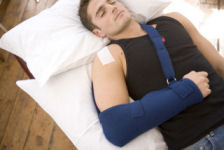
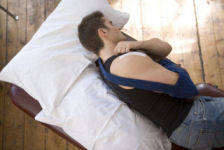
FOLLOW UP APPOINTMENTS
An appointment will be made for you to see the surgeon or specialist therapist 3 weeks post-operatively.
DAILY ACTIVITIES
For the first three weeks most activities of daily living for example feeding, dressing, cooking etc must be carried out using your un-operated arm. If appropriate an occupational therapist will be available to give you advice on how to do this.
LEISURE ACTIVITIES
Your physiotherapist and surgeon will advise you when it is safe to resume your leisure activities. This will vary according to your sport and level, as well as the period required to retrain your shoulder muscles with physiotherapy.
Below is a rough guide:
| Swimming | Breastroke Freestyle |
6 weeks 3 months |
| Golf | 3 months | |
| Contact Sport | Includes rugby, horse riding, football, martial arts, racquet sports, and rock climbing | 3 months |
DRIVING
You will not be able to drive for a minimum of 6 weeks. Your surgeon will confirm when you may begin.
RETURNING TO WORK
This will depend upon your occupation. Sedentary (office) workers should be able to return between 3-6 weeks, but manual heavy workers may not be able to return for 3 months. You will need to discuss this with your surgeon.
REHABILITATION PROTOCOL
The physiotherapy rehabilitation protocol will vary according to your surgeon's preference. Click here for our recommended protocol.


